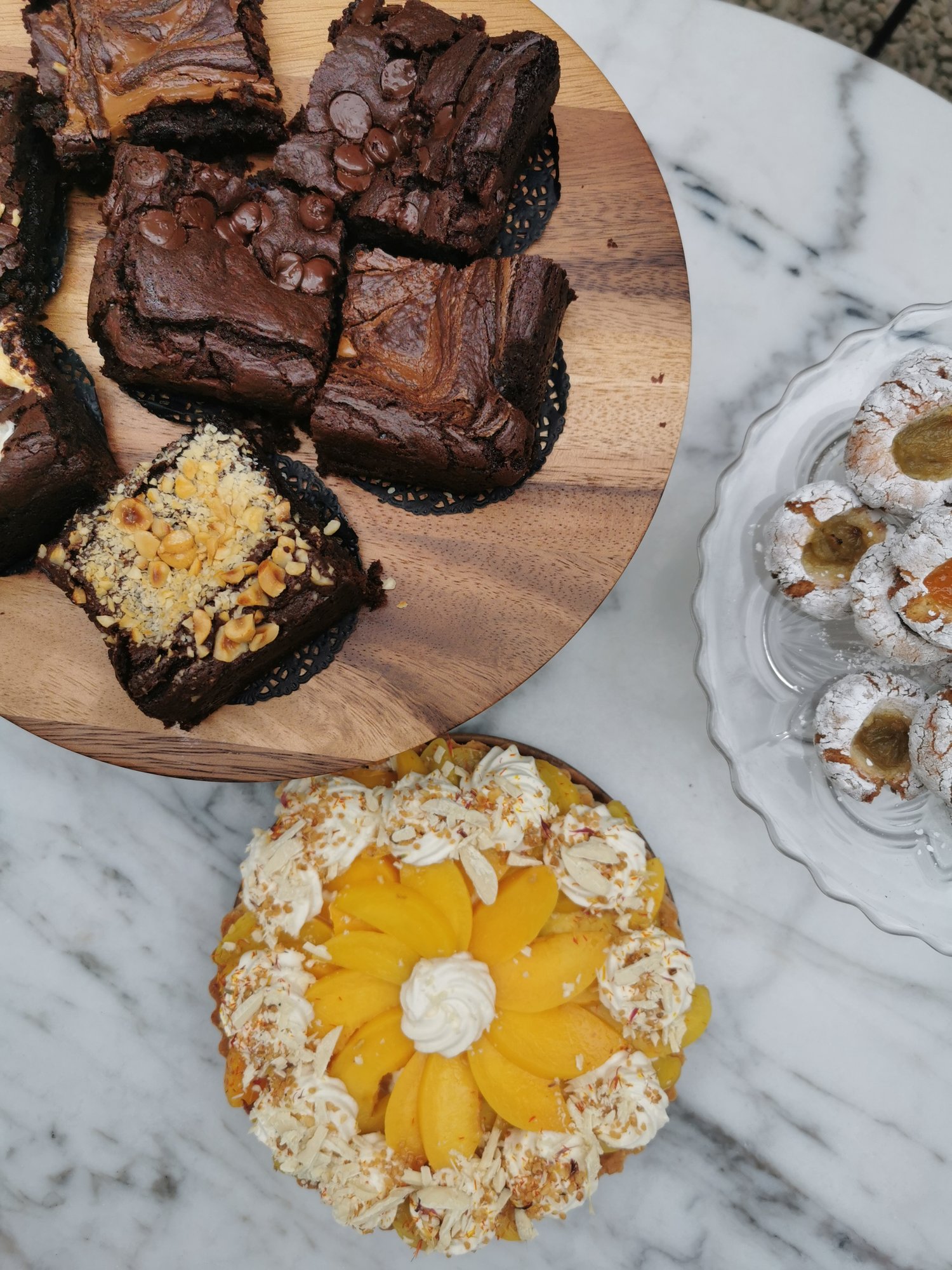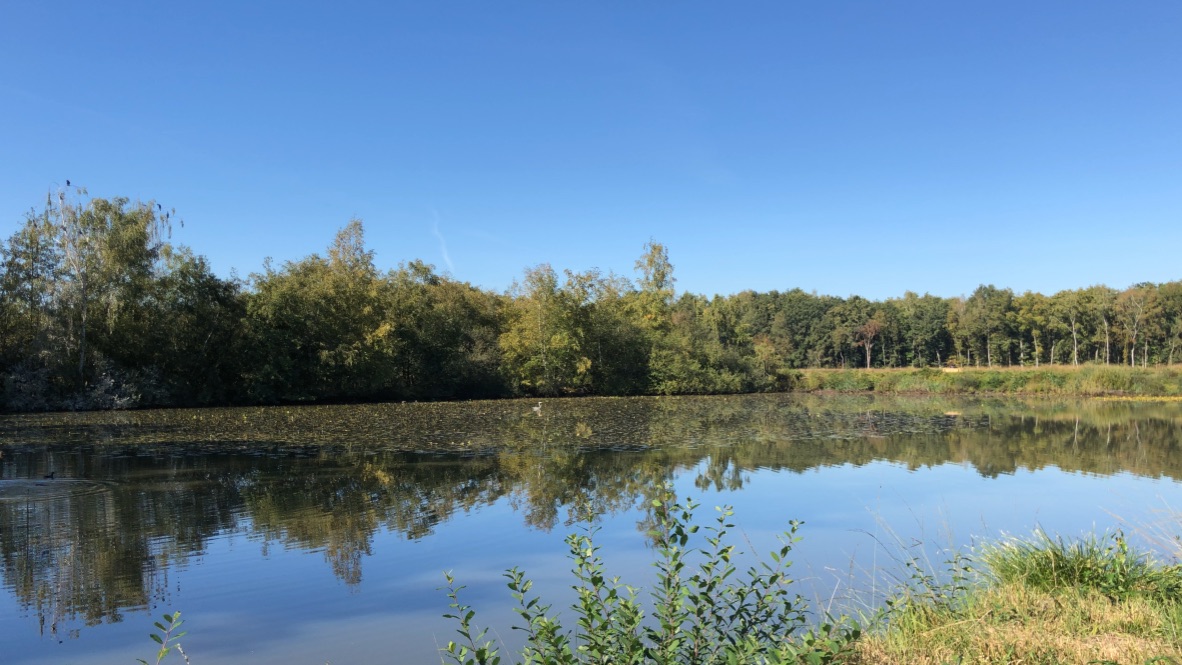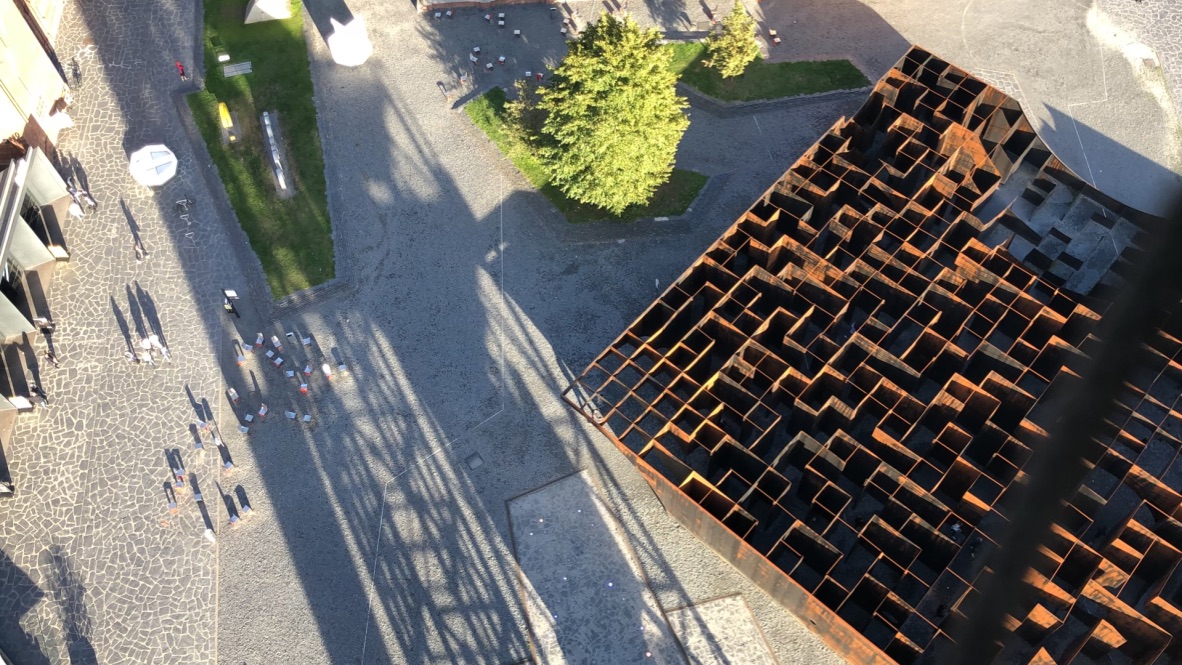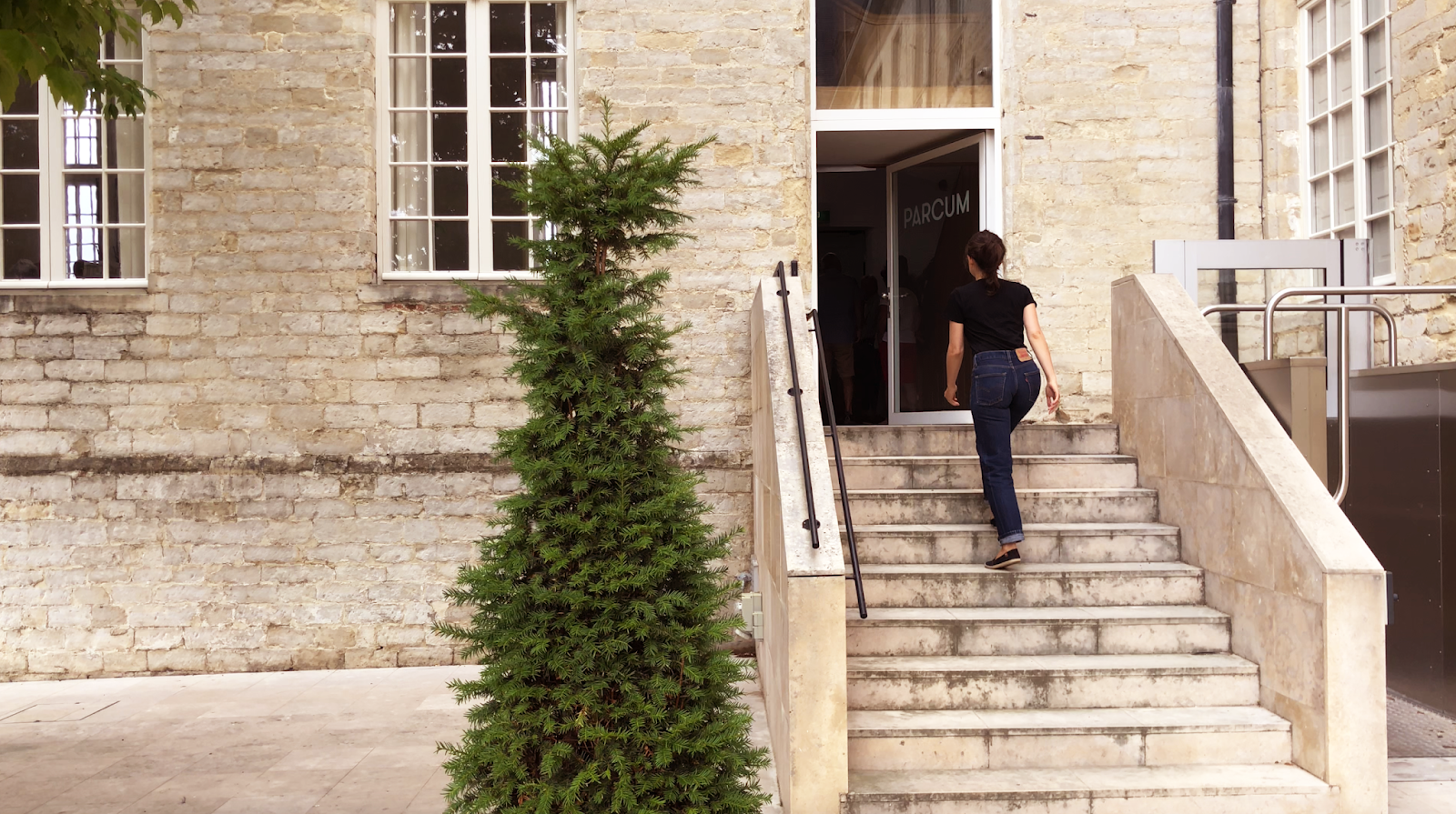I had the privilege of attending the opening of Joseph Thabang Palframan’s Atomium and Other Lessons from Pointillism. The title alone sparks curiosity, hinting that the exhibition dives deeper than just the well-known Belgian monument. And it certainly does. Palframan weaves together ideas of time, colonialism, and memory, showing how they are all intertwined—much like the Atomium’s steel spheres themselves. Born in Namibia and now based in Belgium, Palframan brings a fresh, personal lens to these themes, challenging us to rethink the stories national landmarks tell and, perhaps more importantly, the stories they leave out.
The first painting visitors encounter when entering the space shows young Black men relaxing and having fun in front of the Atomium. Their carefree, powerful poses contrast with the history associated with the structure. Built in 1958 for the Brussels World’s Fair, the Atomium was meant to symbolise "scientific progress", yet the same event included a “human zoo” where Congolese people were displayed in a reconstructed village, dehumanized for the entertainment of European spectators. Palframan’s painting of these young men reclaims this space—an image of confidence that challenges both the past and present, raising the question: what has been done to rewrite this chapter of Belgian history?
To the right, the artist presents the Atomium in isolation, its structure softened by the artist’s choice of colour and Pointillism. Unlike traditional phallic landmarks such as the Eiffel Tower, skyscrapers, or Egyptian obelisks, the Atomium’s spherical forms evoke a distinctly feminine presence. This subtle reimagining invites a shift in how we perceive monuments, demonstrating that their meanings are not fixed but fluid—something that resonates deeply with me, as a woman. Palframan seems to challenge us to reconsider the authority and power traditionally imbued in such structures, asking: who truly defines what these monuments stand for?
Opposite the painting of the young men, a more intimate scene unfolds in another portrait. While it might seem like a personal family moment at first glance, Palframan shared that this painting is not of his own relatives but of individuals he connected with during his travels. The artist sits between two women—one of whom has since passed away. Her absence is emphasized by her portrayal without the Pointillism technique used for the other figures, creating a poignant contrast. Palframan explained that the elderly woman was one of the oldest in her community, making her presence symbolic of generational continuity. This focus on memory and time ties beautifully into the broader themes of the exhibition. I found myself reflecting on the way this simple, quiet moment captured the passage of time in a deeply moving way, adding layers of meaning to the entire project.
In the background of the family portrait, a white doll sits quietly on the sofa, seemingly unobtrusive, yet loaded with significance. Palframan’s inclusion of this symbol is subtle but deliberate. A white doll in a Black family’s home evokes the lingering presence of cultural imperialism, a quiet reminder of how these influences seep into even the most personal spaces. Historically, white dolls have been linked to damaging the self-esteem of non-white children by promoting exclusionary beauty standards. Having experienced the impact of these symbols myself, I know how they impose ideals that undermine identity, acting as a form of psychological harm, silent, but deeply insidious.
On the opposite of the Atomium painting, a smaller portrait of a solitary woman caught my attention. Palframan chose her from a photograph of a crowd, yet here she stands alone, gazing away from the Atomium. Her quiet defiance in looking away made me reflect on the many ways women resist, sometimes in silence, sometimes by simply turning their backs on the symbols of authority. I found myself wondering about her story, and in doing so, it felt as if Palframan had created a space for her, for women like her, to resist being swallowed up by the weight of history.
Palframan’s use of Pointillism throughout the exhibition transcends technique; it serves as a metaphor for the complexity of identity and history. Each dot represents a moment, a fragment of experience, yet together they form a cohesive image. This reflects how personal and collective identities are woven from countless individual moments.
You can visit Atomium and Other Lessons from Pointillism at Studio Minckelerstraat 139 in Leuven. The exhibition will be on view until September 22nd. Support local artists and discover the new generation of talented individuals who call Leuven home.
This article is part of a series where I highlight the work of fellow Leuvenaars as we work toward becoming the European Capital of Culture. Read the first article in this series, How a Leuvenaar Bakery Turned into a Sociocultural Entity here.
 |



















